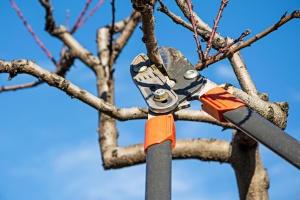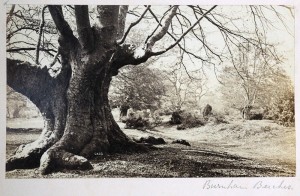Well, once again a few spellcheck anomalies have kept me amused over the past year or two, so I thought it was time for another instalment. It is the gift that keeps on giving, so unless everyone starts making a concerted effort to proof read their answers before submitting, I may well be back in a couple of years’ time.
I trust as always that those who recognise their own work will forgive me. Having found errors in my own feedback on occasions I am in no position to preach…..just engage in a bit of light-hearted, mutual mockery……..
Obviously trees interact with their surroundings in a number of ways, but I was blissfully unaware that there had ever been such a thing as an ‘exchange of grass’.
I appreciate that one should always keep calm in the face of adversity, but suggesting that ‘serenity’ is a way of dealing with fire is perhaps a little too laid back.
I know everyone involved needs to take a personal interest in a tree strategy before it can be put into practice, but the reference to the ‘implantation of the policy’ seemed to be taking things just a little too far.
Even regular tree inspections can never remove the possibility of what are still sometimes referred to as ‘Acts of God’, but I suppose employing a ‘parson’ to inspect trees would perhaps improve the chances of finding such a problem. I wonder if the gradual phasing out of divine responsibility is what someone was referring to when they wrote about ‘atheistic improvements.’
‘base and truck clad in ivy’ is either an interesting disguise or the guys have been parked a little too close to the tree for a very long tea break.
I’m aware that foliage from a number of trees has given us various lotions and potions over the years, but was a little surprised to hear that when pruning the correct amount of foliage needs to be left so the tree can ‘unction efficiently’.
Certain mammals are protected by law, and some of them are very closely related to trees in a particular area; I presume the disruption of ‘bat roots’ refers to them being forced to leave a place they have regarded as home for several generations.
Many would assert that plant health controls have perhaps not always been implemented as quickly as they could have been, but to suggest that a Phytosanitary Certificate is a ‘deceleration by the exporting country’ is perhaps a little unfair.
We are all guilty of endowing trees with human characteristics at times, and though we are all aware that trees can enhance our visual environment, the claim that trees too ‘will contemplate the landscape’ is perhaps just a little too far-fetched.
I think we all have to face the fact that tree roots can spread a very long way but ‘polar roots’ are something I had never considered. Maybe they are the ‘adventurous roots’ that are often referred to?
Expenditure is a subject that certain people can become almost obsessive about, and it can cause a great deal of worry. So it is useful to know that by spreading costs it is possible to ease that ‘fanatical burden’.
I know many arbs. have a very negative view of developers, and I’m sure developers sometimes view tree officers with very little positivity, but to suggest that ‘negations’ routinely take place between the two is a little on the pessimistic side.
The protection of trees on a construction site can often be a bit of a sticking point in discussions with developers, and I know there are various ways of dealing with potentially harmful substances, but I had never seen it suggested that ‘toxic run-off will be stickily forbidden’.
We’ve probably all spoken to trees for one reason or another on occasions, but be careful which words you use: ’vowels can damage trees’ apparently.
The mental effort and anguish associated with the completion of these qualifications should never be underestimated; I can only assume it is the precursor to ‘brow rot’.
I am aware that wood, both living and dead, contains energy both for itself and other organisms, although a lump of wood is going to take some chewing: is it possible that ‘Green oak mouth’ is a condition brought about by such endeavours?
Obviously temperature and rainfall are both closely linked to air currents, to the point where long spells of hot, dry weather can apparently lead to a ‘draught’.
For centuries now mankind has exploited the seasonal bounty provided by fruit trees, but I suspect nobody to date has realised the sustenance that is to be had from deep within an injured tree, which will apparently block its vessels with ‘raisins’.
The way branches are attached, and how their unions can possibly withstand all the various forces to which they are subjected has been a subject of much recent debate, and many are still trying to get to the bottom of a sticky subject, but I had never before heard it suggested that the branch ‘excretes more leverage at the point of connection’ .
I can understand the failure of a compression fork because of the two sides not being ‘fused’ together, but I think suggesting that the tree’s ‘not fussed’ is an unfair accusation of apathy on the tree’s part.
I recall last time I did this that it was worthwhile having someone on the team called Hector, when it came to claiming woodland grants: evidently it is also valuable to have someone in the lorry called Ray, particularly if you’ve just reversed into a rotten tree, since apparently ‘Rays resist decay from spreading around the truck.’
Talking of names, it would appear that one member of the gang could end up very clean, and possibly very happy (or very embarrassed), since apparently ‘Hans should be washed thoroughly before food and drink are consumed.’
I’ve never really thought about what the commonest name for arborists is, but in horticultural circles it would appear that ‘Pete is most often used by gardeners for potting plants’
Vehicles are expensive things to purchase and maintain, so you can understand the reluctance of arborists to use decay detection equipment that involves ‘drilling into the truck’.
I’m all for talking to trees, and it’s important to explain the whys and wherefores of tree work to customers, but I’m not sure who the recipient of ‘informative pruning’ is. I suppose it’s all part of keeping trees in good spirits; then at least ‘cheery trees’ will be happy about being pruned immediately after flowering.
I’m aware that trees can be used to liven up an otherwise drab landscape, and can even promote strong emotional and even physical reactions in people, but I had never heard trees described as ‘looking un-anaesthetic.’
It is impossible to separate arboriculture from social history, and I suppose politics has to come into that as well. In many ways a stake and a newly planted tree do follow the mantra, “From each according to his ability, to each according to his need” but I’d never thought of using stakes to support trees as being the ‘communist system’
Next time you’re considering which trees to buy from a nursery keep an eye out for the ones with woodpeckers in: apparently the ones with a good ‘stem tapper’ are the best. I suppose a vast collection of branches to perch on and berries to eat could explain why ‘trees can provide a heaven for birds.’ Talking of birds, I can only assume that the way ‘a crow reduction alleviates biomechanical stress’ is by reducing the weight of large birds roosting, and building heavy nests.
A CCF managed woodland inevitably contains many varied aromas for visitors to experience, some more pleasant than others: I’m not sure I would enjoy encountering the ‘scents of permanence’.
We shouldn’t underestimate the thought that goes into repairing a damaged sewer: you can only install a pipe liner in a damaged underground service if your ‘brain is not deformed’.
Work sites can be messy places; fluids can be spilt; situations can become inflamed. I think I’ll leave you to come up with your own interpretation for ‘The designated feeling area must have an impermeable ground cover, and any spillage must be reported to the team leader’, who will hopefully have visited the local bakery earlier in the day to stock up on the necessary ‘buns to soak up any spillage of liquids’.
I know it’s reasonably coastal tolerant, and the timber is quite durable, and I suppose winter storms are something a coastline needs a bit of protection from, but I had never thought about using holly ‘at Christmas for reefs’
We all know that nothing lives forever, and people can be very fickle when it comes to deciding what they value, but it does seem a little harsh to only consider ‘putting a momentary value on trees’.
Tree work over open water can be a tricky operation; hence the importance of considering appropriate measures to achieve ‘drown reduction’.
A recognised way of referring to the intensity of emotion that two people can feel for one another is by suggesting there is electricity between them. Mind you don’t get overwhelmed with emotion when carrying out tree work close to overhead services: you might come under the influence of the ‘Love conductors’.
Different people often have a different view on the precise requirements of a particular job; it would appear you can clarify the situation before putting the job out to tender by considering ‘perspective contractors’.
Obviously if you are going to do anything at all underhand to protect trees in the face of development, you need to make sure nobody knows. That must be why cranes on construction sites need to be ‘poisoned carefully to avoid conflict with RPA’s’. It appears one way of reducing that conflict is to make them enter and leave the site in a single line: I presume that’s what ‘processionary measures’ are.
It obviously makes for a good design if everyone involved has an innate feel for which plants work well together, and has an intimate understanding of different trees and shrubs, but there is something slightly disturbing about ‘groping plants together ’.
When one is looking for a reliable supplier of hardy nursery stock, it’s important to find someone who is prepared to go out of their way to meet their customers’ needs. All the more encouraging then to discover they have a ‘compliant procedure’.
I presume the damage caused to trees near pubs is what was being referred to when someone suggested protection is needed from ‘lager mammals’.
It has to be said that weeds do seem to sneak up on you sometimes, and I suppose it would make sense to play them at their own game; in which case woodchip is the way to go, as it is very good at ‘surprising weeds’.
Speed of effect is always going to be a consideration when designing a planting scheme, and riverside schemes are no exception. The thing to do apparently is find some ‘fast rowing plants’ – oarchids maybe?
As arbs. we are frequently ready to jump to the defence of a tree accused of causing damage to a building, looking for any other possible reason we can find. It would be a bit of a gift if one discovered that over doorways and windows, the load was actually only being supported by ‘lentils’.
Finally I have found the path to salvation; apparently deep ploughing can lead to ‘a soul with a much improved structure’!
Many thanks to all the contributors,
Andy Summerley



